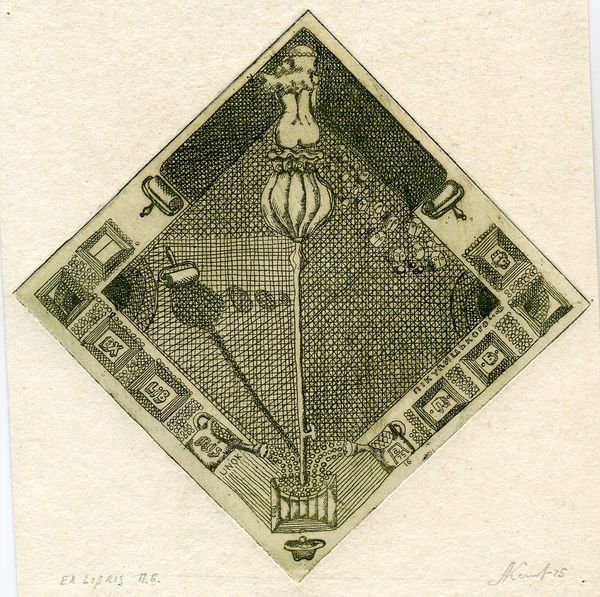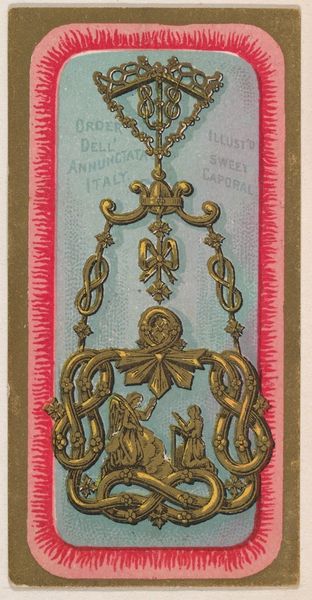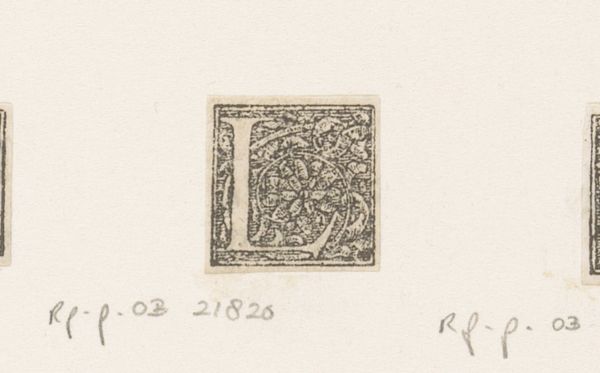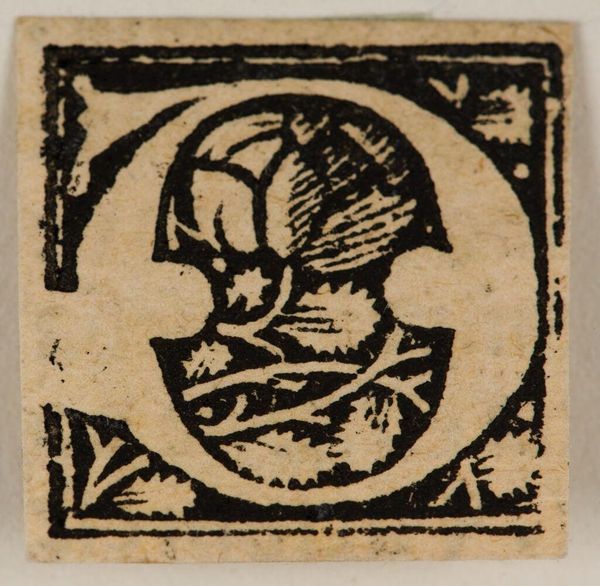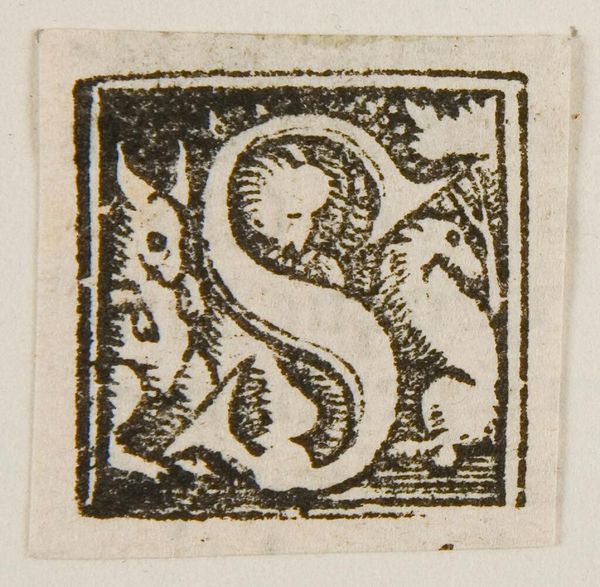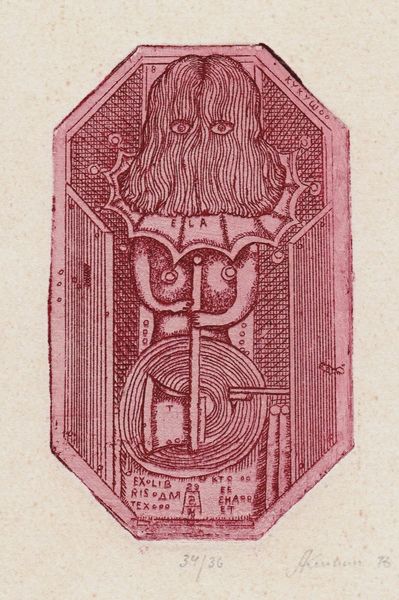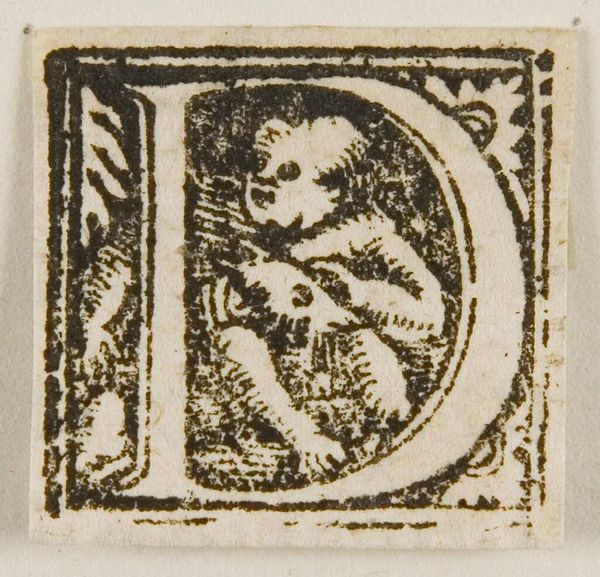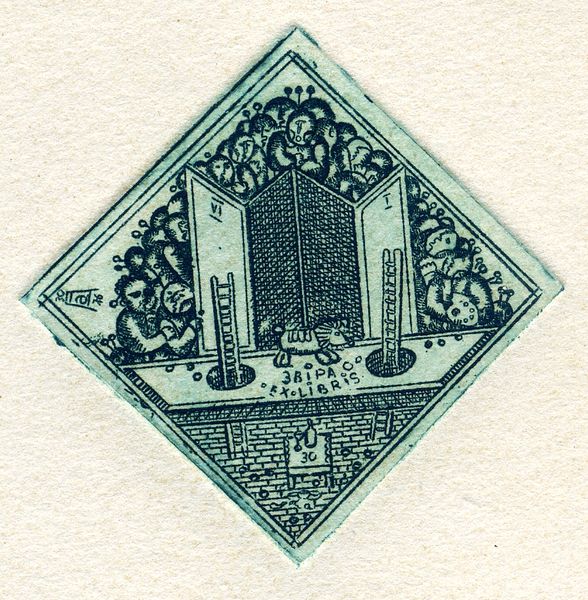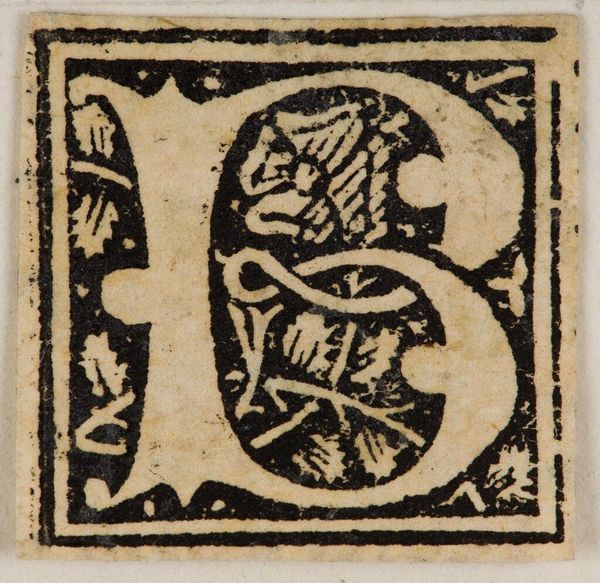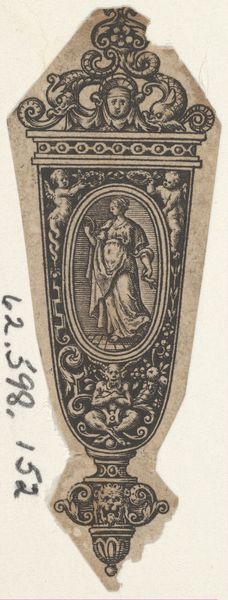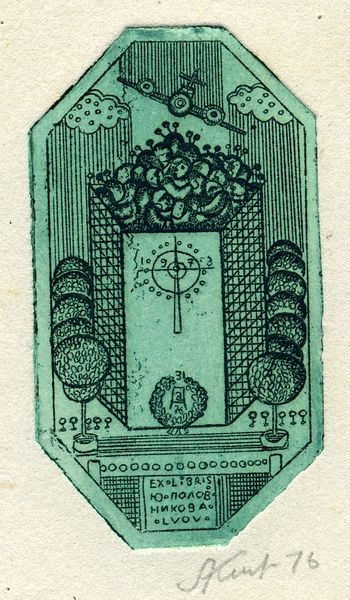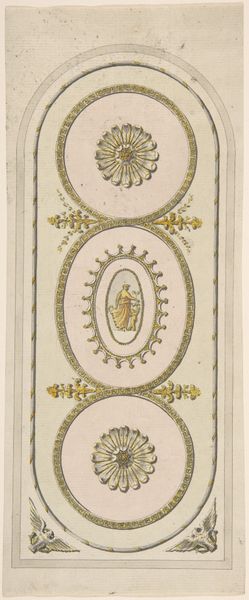
Copyright: Oleksandr Aksinin,Fair Use
Editor: So, this is Oleksandr Aksinin’s "Exlibris T.," made in 1976. It looks like a print, an intaglio on paper, maybe with ink and coloured pencil? It's small and very intricate, with what looks like a seated figure, a bottle, and some text I can't quite decipher. There's a kind of unsettling stillness about it. What strikes you about this piece? Curator: What immediately grabs my attention is the date: 1976. Think about the Soviet context in which Aksinin was working. He was part of a nonconformist art scene, and his work, with its symbolic and often erotic undertones, directly challenged the Socialist Realism that was officially sanctioned. How do you think the small scale of this print contributes to its potential for resistance? Editor: That’s fascinating. I hadn’t considered the act of creating small-scale works as a form of defiance. The intimacy of it makes sense, a secret language almost. Curator: Exactly. An "Exlibris," or bookplate, designates ownership. Aksinin uses it as a vehicle to embed subversive imagery into a seemingly innocuous object. The figure's ambiguous pose and the "Exlibris" title imply a self-reflective or even forbidden relationship with knowledge, art, and personal expression. Editor: The word 'suicide' is visible near the bottom-right corner, written in what appears to be Cyrillic. Do you think Aksinin meant the imagery to have a clear meaning? Curator: I believe Aksinin's intent was less about clarity and more about triggering individual reflection, hinting at states of being and philosophical depths that official Soviet art aimed to negate. The bottle may symbolize escape or self-destruction. What it signifies is probably dependent on who is looking at it. Editor: So, in essence, Aksinin turned the idea of a bookplate into a quiet protest, making a potent statement about personal and artistic liberty under a repressive regime. Curator: Precisely. This seemingly minor print carries a weight of cultural and political rebellion. Editor: This has really opened my eyes. I'll never look at bookplates the same way again. Thanks. Curator: My pleasure. It’s all about looking beneath the surface, and thinking about how artists navigate—and sometimes subvert—the constraints of their time.
Comments
No comments
Be the first to comment and join the conversation on the ultimate creative platform.
